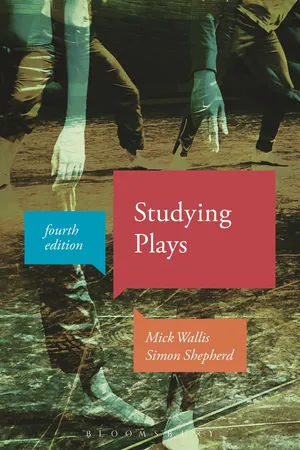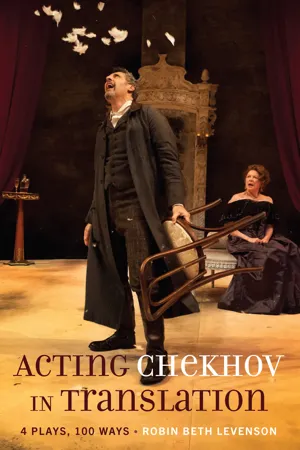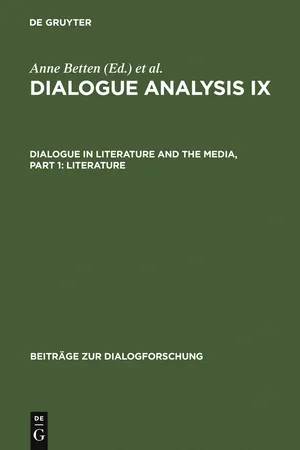Literature
Action in Literature
"Action in literature" refers to the events, conflicts, and activities that drive the plot forward in a story. It encompasses the physical and emotional movements of the characters, as well as the sequence of events that unfold. Action is crucial for creating tension, engaging the reader, and advancing the narrative in literature.
Written by Perlego with AI-assistance
Related key terms
1 of 5
6 Key excerpts on "Action in Literature"
- eBook - PDF
Literary Fiction
The Ways We Read Narrative Literature
- Geir Farner(Author)
- 2014(Publication Date)
- Bloomsbury Academic(Publisher)
Finally, there is the reader’s general knowledge about the existing world. As we take in the author’s selection of elements and details, we compare the signified (the text-based mental model of the action) with our general conception of the extratextual world, not with the referent itself (the action). The thoughts and feelings of Hemingway’s characters are left out of the text (i.e. the text-based model of the action), but after comparing the text (the text-based model) with our general model of the real world, we realize that their thoughts and feelings have been left unstated. In other words, the thoughts and feelings of these characters are only implied in the text/model, whereas they exist in our general conception of the action, as general notions without details. What is the action? The action is the process of change and development in the conditions of the fictional characters, comprising both changes in their external environment and in their own bodies and minds. The content of the action may range from minimal alterations (like natural aging) to radical changes in the characters’ existential situation, but in fictional literature, there is a tendency to prioritize dramatic changes, which are usually the result of conflicts between characters: one character cannot satisfy his own needs without affecting or interfering with someone else’s. Most literary action implies some sort of conflict; the antagonists may include human beings, other sorts of living creatures, objects or even the environment as such. The Structure of the Action 145 However, literature can also be almost actionless, primarily in lyric poetry, whose brevity often restricts it to idylls and static situations. Conflict-free novels and plays are rare, though not unheard-of. - eBook - PDF
Computing Action
A Narratological Approach
- Jan Christoph Meister, Alastair Matthews(Authors)
- 2008(Publication Date)
- De Gruyter(Publisher)
In other words, such a definition inadvertently portrays action as something that pre-exists outside the narrative text and is either depicted in it in the form of fiction, or made empirically present in the form of an aesthetic speech act at the level of discourse. These, however, are essentialist premises which are irreconcilable with our narratological interest in formulating a definition of literary action which takes into account theories which are based on constructivism and reception theory and model how readers process narratives. I intend to explore the concept of action neither in purely intentionalistic terms, nor idealistically as an autonomous aesthetic abstraction, but ultimately as a concept which is self-explanatory in the most literal sense of the word, as a concept, that is, which is closely related to the concepts of both the real and the fictional self. Who acts in literary activity, in literary action? On what ontological levels are such actors to be found? What conditions of possibility are shared by activity as a process and action as the product of a sequence of such processes? And what are the consequences when these processes become self-referential, when activity takes place on action and makes transparent the very mechanisms by which action is perceived and constructed step by step in the reader’s mind? It is in this respect that Fichte’s dictum will be relevant to our exploration of the concept of literary action, which we shall investigate from the perspective of a narratological interest that focuses on the problem of how to conceptualize literary action against the background of theories such as reception theory, constructiv-ism, and Greimassian semiotics. Put in less abstract terms, our overall interest is twofold. - eBook - PDF
- Mick Wallis, Simon Shepherd(Authors)
- 2018(Publication Date)
- Bloomsbury Academic(Publisher)
4 Plot and action This chapter has four sections. In the first, we encounter ways of thinking about plot and action. We then turn to look at ways of modelling the action of a play, as a means to understand the way it works on an audience. The third section considers questions of storytelling, or narration. Finally, we turn to the distribution of characters across scenes and how this relates to the design of the action and its plotting. Plot, action and situation Action and events What is action? Pfister (1988) suggests a simple and powerful definition: an action is something which changes the situation. Hamlet stabs Polonius through the arras and so has to go on the run. Lear divides kingly power and so the kingdom falls into disarray and he falls prey to his children. Pfister diagrams: S1 S2 action ¾ ® ¾¾ Hamlet’s action above is purely physical. Lear’s action is accomplished through words. And recall our discussion of speech acts in general: even a seemingly bald statement can change the situation. Cordelia’s simple statement ‘I love your Majesty/According to my bond’ (1.1.91–2) has a devastating effect at the start of King Lear – because Lear takes the statement as an act of refusal. High dramatic consequences flow from revelatory statements in many melodramas. In Palmer’s East Lynne (1874), Lady Isabel has left her husband and is assumed dead. But she returns disguised as a governess, Madame Vine, to nurse her dying child. Her cry ‘My child is dead!’ (p. 336) reveals that the mother herself is living. It begins the process of her discovery to her husband and their reconciliation before she herself dies. STUDYING PLAYS 80 Is, then, everything that is said and happens on stage ‘action’ in Pfister’s terms? Usefully again, he says not. Consider a play like Beckett’s Waiting for Godot (1955). The two characters say and do many things, but their situation remains the same at the end of the play as it was at the beginning. - eBook - PDF
Acting Chekhov in Translation
4 Plays, 100 Ways
- Robin Beth Levenson(Author)
- 2019(Publication Date)
Nei- ther discipline (linguistics or literary analysis) developed the necessary tools to deal with other dimensions in a satisfactory way” (Zuber 160). As discussed in Chapters II and III, the “other dimensions” often so difficult for literary critics and linguists to describe are the theatrical ones. This chapter will discuss the most important of these: the notion of “Action.” Action is not an intellectual concept, but a functional tool for actors and other theatre practitioners that helps define the nature of the play itself, and the psy- cho-physical work of the performer. An understanding of Action is necessary in describing how language in various translations may influence the actor’s work on Chekhov’s plays in translation, addressed in Chapters VI through IX. According to teacher/director Bernard Beckerman quoted above, drama lacks the necessary tools that would allow us to define the aesthetics of theatre. This is not wholly true. We do have some terms and techniques—such as Action—to help describe the “sequential features of a play,” and the theatrical elements that make up the drama. The notion of Action comes to us largely from Aristotle, Stan- islavsky and his successors, and other contemporary artists, critics and teachers who understand the difference between drama and other written literatures. For example, modern artists (and teachers and critics) as diverse in their backgrounds as Francis Fergusson, Polish director/theorist Grotowski (self-proclaimed propo- nent of Stanislavsky 3 ), members of the Group Theatre of the ‘30s (Adler, Clurman, Lewis, Strasberg, Carnovsky, Meisner, Brand), and contemporary Russian acting teachers (Yevgeny Lanskoy, Marat Yusim and Slava Dolgatchev 4 ) all teach and propound a view of Action as the basis of drama. Beckerman begins his treatise on the nature of drama (Dynamics of Drama) with Aristotle and Stanislavsky; he gives his definitions of theatre and Action based on these masters (3–5, 11, 17–23). - eBook - PDF
The Desire to Write
The Five Keys to Creative Writing
- Graeme Harper(Author)
- 2018(Publication Date)
- Bloomsbury Academic(Publisher)
Actions are defined as your individual, specific occur-rences. Acts are defined as an accumulation of your actions around a sequence or evolution of the work. Just like in a stage play, an opera, or a film, an act is associated with movements in the action or development of characters or patterns of evolution in emotions or ideas or steps toward resolutions. Whereas considering creative writing an event allows us to focus on the various episodes in an event of writing, and all the elements these episodes include, identifying acts allows us to determine how sets of actions relate to each other, and in what ways the content of your creative writing relates to the labor of producing it. In other words, an act of creative writing can refer both to the internal aspects of the piece you are creating and to sets Action 47 of compositional actions you are undertaking to move the piece forward to a conclusion. There is good reason for thinking of creative writing in this actions-within-acts way. In essence, the actions of drafting, revising, and editing have both a forward movement and a sideways movement. You are moving forward with the sense of your intention to complete a work, while at the same time approaching it holistically, sometimes cantilevering so as to further support later events or references in the work. As you draft, revise, and edit, your compositional actions are both seeking to reach an endpoint and seeking to ensure what comes before sustains the movement toward that conclusion. It might be that you have planned this out meticulously and the first compositional act of your creative writing is that very aspect of planning. It might be that you don’t plan at all, but that your first act in your creative writing contains a foray into defining the sense of the work through drafting exploration. In the latter case you’re learning the work as you create it. In the former sense you’re endeavoring to learn it before you create it. - eBook - PDF
Dialogue Analysis IX: Dialogue in Literature and the Media, Part 1: Literature
Selected Papers from the 9th IADA Conference, Salzburg 2003
- Anne Betten, Monika Dannerer, Anne Betten, Monika Dannerer(Authors)
- 2011(Publication Date)
- De Gruyter(Publisher)
Time waits for no man. What makes up a literary text is thus primarily based on recurrent basic meanings, on ultimate questions or on the mystery of life. From an action-theoretical point of view it is the communicative intention which cre-ates a literary text, the intention to express the inexpressible or at least something which al-lows valuable insights into the underlying 'truth' of life. This claim constitutes the literary action game which can be classified as a sub-type of the representative action game, or more precisely as a sub-type of the expressive action game: initiative action by the author (the literary text) literary action game <-> reaction by the reader (up-take, i.e. taking a position) making the claim of REPRESENTING/EXPRESSING ( T H E INEXPRESSIBLE) Figure 1 fulfilling the claim ACCEPTANCE/EMPATHY According to the general principle of dialogicity, a literary text is not only created by the au-thor's claim or desire to create a poem. The poet's intention must be taken up and accepted by the audience in order for the text to become commonly acknowledged as literary. Thus, from a dialogic point of view, the term 'reception' for the role of the hearer in literary studies falls rather short. Dialogue means more than expressing and trying to understand the ex-pressed. Dialogue means action correlated with reaction not only with understanding. And indeed, this is what human beings obviously do; they cannot do otherwise, only understand, even if they wanted. Reception is always followed by reaction, i.e. taking a position, chang-ing one's life or refusing to be influenced. Integration of different abilities - in this case re-ceiving, i.e. trying to understand, and taking a position - is a basic condition of human be-haviour. Grasping the feature 'literary' as a basic desire of human beings to look behind the veil of so-called reality, the literary action game is primarily based on meaning not on means.
Index pages curate the most relevant extracts from our library of academic textbooks. They’ve been created using an in-house natural language model (NLM), each adding context and meaning to key research topics.





